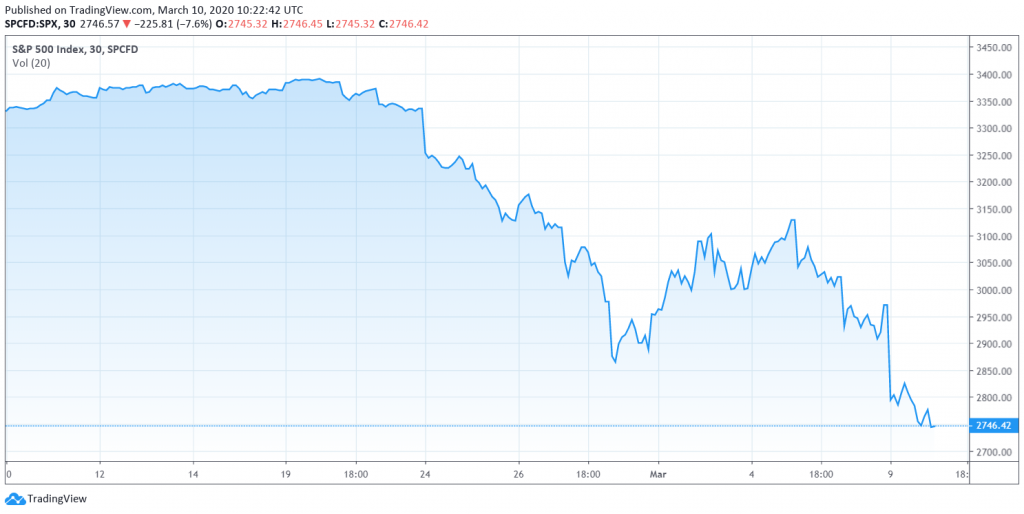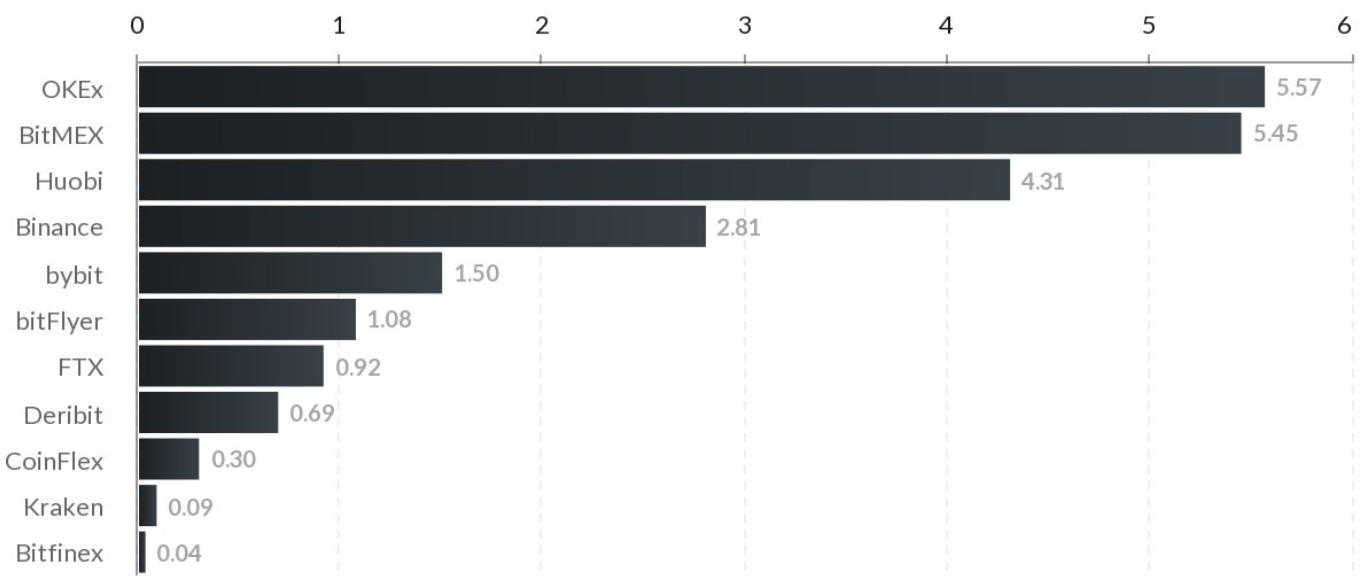Let’s talk about Tezos (XTZ). For a long time, the joint United States–Swiss altcoin has had a strong reputation, yet a checkered past. Only recently has the price begun to reflect the faith that many already had in the protocol. However, is the rapid rise of Tezos justified, or is it another case of crypto “FOMO”?
Let’s talk about the marketTezos hit an all-time high of $3.70 earlier this year in February. The price has subsequently pulled back, but overall, XTZ is still outperforming the majority of altcoins. This drop does not appear to represent a lack of interest from the market.
Tezos price chart from October 2019 through March 2020 Source: Coin360.com
Talk Tezos to meTezos was conceived in 2014 by Arthur and Kathleen Breitman. In July 2017, it held a wildly successful initial coin offering that raised $232 million, making it the largest ICO for a brief time until it was overtaken by Filecoin a few months later. The organizational structure was pure 2017: the Switzerland-based, nonprofit Tezos Foundation held funds, while a U.S.-based firm, Dynamic Ledger Solutions Inc., did the work and was paid by the foundation. In the halcyon days of 2017, many firms thought this structure would allow them to minimize — or even avoid — taxes, but this has largely been proven to be false.
Throughout 2017 and early 2018, the Swiss nonprofit model was considered “vanilla” for ICOs at the time. It was hoped that such structures would give the appearance of respectability, but it was here that things started to go wrong.
As Wired Magazine reported in 2019, the then-head of the Swiss nonprofit, Johann Gevers, found himself in a dispute with the Breitmans, which derailed both the project and its timeline. It was largely because of this very public, very messy dispute that Switzerland’s Crypto Valley and the Swiss nonprofit model lost their luster. Tarred by the public spat, Tezos languished in development hell.
XZT turning around?However, in early 2019, things began to change as the foundation quietly began to get back on track. What was driving this performance? Much of the fundamental attraction of Tezos remained the same: a three-layered platform comprising a network, transactions and consensus, a proof-of-stake protocol rather than proof-of-work, and support by market players such as Tim Draper.
But what has changed? One key area driving interest is the ability to stake the coins on large exchanges such as Coinbase, which provides a handy revenue stream for holders and drives some demand.
A number of people who spoke with Cointelegraph mentioned that much of the interest is coming from three key points, one of which is the “STO Pipeline” of projects that are in the process of announcing — or will soon announce — development on the Tezos platform. These will all drive XTZ demand in some way, whether for transactions or directly for purchases of the new security token offering tokens. The second driver is how well-capitalized the foundation is, while the third is around Tezos’s technology — but more on that later.
Here come the STOsMany in the crypto community believe Tezos will power the next generation of STOs. According to one view, over $2.6 billion worth of STOs are currently in the process of being spun up using the Tezos protocol. The three reasons this perspective puts forward for the mass adoption of Tezos for STOs are the security of smart contracts, custody and upgradeability.
More recently, the very active Tezos Commons page posted a comparative study as to why Tezos will outperform Ethereum when it comes to STOs. Mason Borda, the CEO of TokenSoft, even went so far as to say that within a year, 25%–35% of all STO issuances through TokenSoft would be on Tezos.
Some back-of-the-napkin mathematics indicate that, if those aforementioned projects are valued at $2.6 billion, the market would be looking at $500 million of sales ready to go four months down the road.
Alison Mangiero, the president and co-founder of the Tocqueville Group, a New York-based blockchain firm that operates under the name TQTezos and advances the Tezos platform, said:
“Over the past six months, it has been clear that Tezos is a major destination for securitized assets. Companies like Vertalo, BTG Pactual and tZERO have all announced offerings on Tezos in just the last two months. Additionally, the Tezos community recently voted to approve the Carthage amendment to the protocol — marking it the third on-chain upgrade since the launch of Tezos.”
Money talksThe second driver is the rumored $600 million the foundation is sitting on. With XZT performing at almost six times its ICO price of $0.47, the foundation’s war chest is filled to the brim.
In addition to the well-capitalized foundation, a significant driver of XTZ interest has been the introduction of opportunities for holders, such as “staking” XTZ on Coinbase or other opportunities that allow users to earn while holding on to their assets. With the amount of interest currently being expressed in “coins that earn'' features, these types of staking or loaning options have been on the rise. Cointelegraph spoke to Ryan Rabaglia, a head trader at Hong Kong-based OS Limited, Asia’s largest cryptocurrency over-the-counter desk, who said:
“I believe Tezos is gearing up for a strong 2020. As we exited 2019, the market experienced a major shift in appetite for yield generating products, such as lending out idle assets and staking-as-a-service offerings. Based on interest we've seen and a shift in appetite, I believe the current trend will continue throughout the year, with volumes outpacing peers in the top 10–20.”
It’s the technologyThe third — and perhaps most controversial — driver is the programming language itself. Tezos uses an ultra-obscure programming language called Michelson that has both proponents and detractors. Many pro-XZT members of the crypto community think this niche approach protects both the code and the platform, as fewer coders means less chance of malicious code or attacks.
Meanwhile, those who are anti-XZT believe that fewer users in the field means that a small base of developers will push Tezos into a place of obscurity, making innovation hard and lessening the chance that the community will reach a critical mass.
It is worth noting that the language Tezos compiles with was chosen because it supports formal verification. There are several higher-level smart contract languages that compile down to the base language so that developers don’t need to learn it. In a recent thread on Twitter, user djangobits, who writes for Tezos, said:
“You don't have to write Tezos smart contracts in Michelson. There are other languages like SmartPy (Python), LIGO, Liquidity, Morley (Haskell), Fi (JavaScript / Solidity), Archetype (Ocaml) and compile those to Michelson.”
Jose Perez, founder of the crypto-chat app Whalechat, spoke to Cointelegraph about the technical aspects of Tezos:
“As a blockchain developer, one of the most important factors to pick a smart contract platform for my project are the abundance and quality of the development tools, the documentation and the community. Other platforms, such as Ethereum and EOS, currently surpass Tezos in these areas. If we judge the success of a smart contract platform by the number of people who use it, building the node client and the smart contract reference implementations in uncommon languages is arguably not the best way to achieve that goal.”
The final decision on whether using an obscure language is a blessing or a curse hasn’t been decided yet. Tezos has been very active in this regard, offering developer training courses and issuing a series of grants to teams building applications on Tezos, or to those contributing significant amounts of code to the smart contract database. While the developer community for Tezos may be relatively small compared to other protocols, they are active.
Is Tezos the future, or is it just FOMO?One word that came up a lot when discussing Tezos is “fomonomics”: the idea that the implied benefits of the project, the well-funded foundation, the list of upcoming possible STOs on the platform and the hype found on Twitter and Reddit have all combined to increase the fear of missing out to such a degree that the market treats these implications as fact.
Yet, in the case of Tezos, it seems like much of the interest is genuinely driven by continuous progress from the project’s team toward concrete milestones, which are indicated in the roadmap. Speaking to Cointelegraph, Ryan Lackey, the head of security for the Tezos Foundation, said:
“Big goals for Tezos and for Tezos Foundation in 2020, including STO strategy, payments and updates in the core protocol for privacy, improvements to the storage engine and other under-the-hood aspects, increased adoption in various places around the world, hiring 30+ people throughout the ecosystem, developer tools and developer experience, improvements in test and QA, etc.”
Where does that leave Tezos?The interest in Tezos over the last quarter has been sustained and significant. While the slight pullback in the market that has been observed thus far in March has corrected the price from its all-time high a month ago, there is still a lot of goodwill in the project and support from the wider community.
The message from the people involved in the project seems to indicate that they feel the recognition is well deserved. However, the immediate benefits of Coinbase staking and active trading are also having a significant impact on the price of XTZ. It is currently unclear just how much of this interest is coming from each of these drivers.
Source




 Latest news:
Latest news: 





 Shop
Shop
 Bidding Open
Bidding Open













